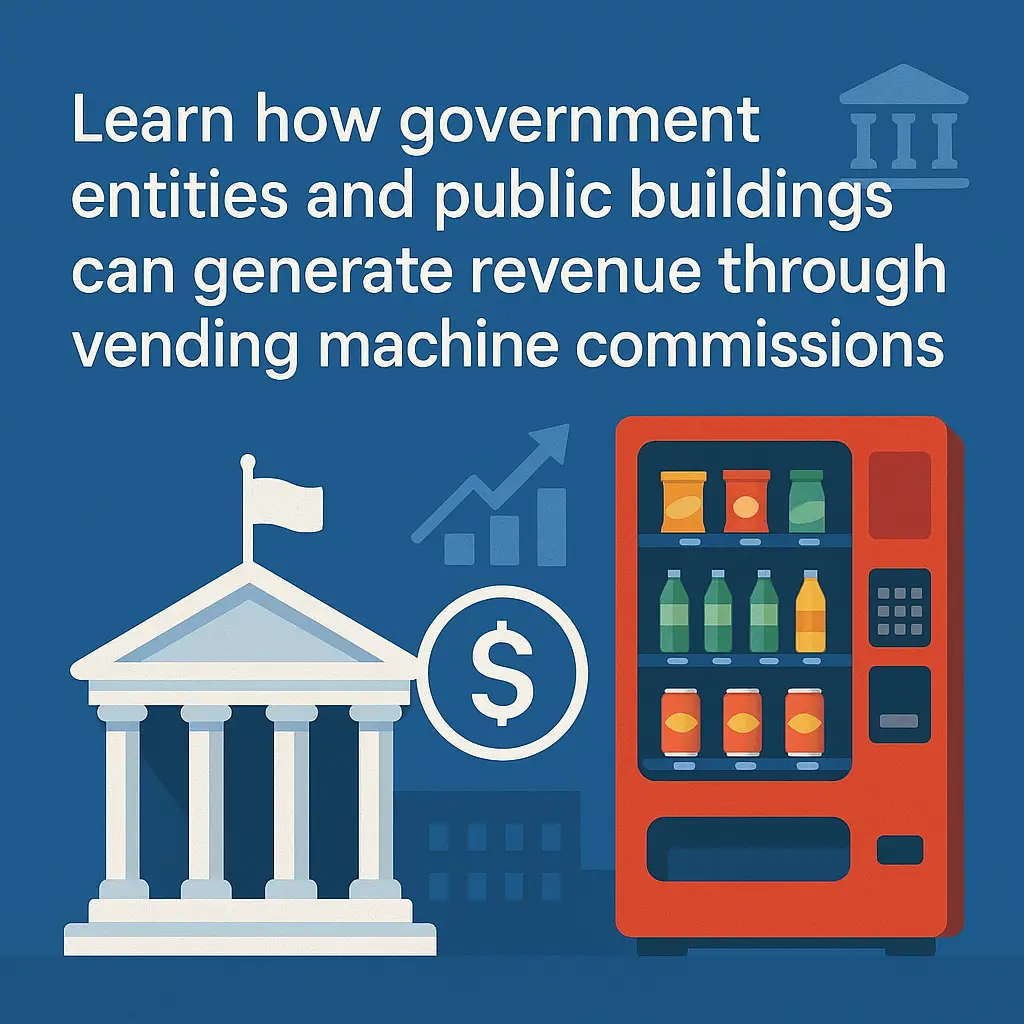Revenue Sharing from Vending in Public Buildings
Learn how government entities and public buildings can generate revenue through vending machine commissions.
Back to Vending for Public Buildings ResourcesLearn how government entities and public buildings can generate revenue through vending machine commissions.
Back to Vending for Public Buildings ResourcesCommissions collected from machine sales can fund facility improvements, events, or community programs, turning everyday snack purchases into a sustainable revenue stream.
![]() Public buildings can earn commissions from vending machine sales
Public buildings can earn commissions from vending machine sales
![]() Clear agreements help maximize revenue and ensure transparency
Clear agreements help maximize revenue and ensure transparency
![]() Revenue can support facility budgets and community programs
Revenue can support facility budgets and community programs

Public buildings, including government offices, libraries, and civic centers, can transform their foot traffic into a sustainable funding source through revenue sharing programs. These arrangements allow facilities to collect a percentage of vending machine sales, generating passive income with minimal administrative effort. Whether it’s bottled water, healthy snacks, or grab-and-go meals, each purchase can contribute to your budget.
Most revenue-sharing agreements are based on a simple commission model. The facility earns a set percentage of gross or net sales from the machines placed onsite. Percentages vary depending on factors like machine type, sales volume, and location. For example, high-traffic areas often receive higher commission rates due to greater sales potential. Clear terms, including how and when payments are distributed, should always be outlined in writing to avoid confusion later.
Many public buildings also use revenue from vending programs to support staff initiatives, community outreach, or building improvements. This makes the program more than just a financial tool—it becomes part of a larger community impact strategy.
Public entities often have to balance income generation with compliance requirements and community health goals. For example, some states mandate healthy vending standards that shape product selection. Revenue models should be designed with these policies in mind to ensure programs remain both profitable and compliant.
Facilities also need to consider machine placement, accessibility, and security. Strategic placement in visible, high-traffic areas can increase sales while maintaining oversight. For insights on placement and foot traffic optimization, see our guide on serving civic center audiences.
Some locations also explore enhanced security measures for machines in public spaces. For more on this, read our article on protecting vending equipment in civic environments.
If you're exploring vending options for your business, Vending Exchange can help simplify the process. Delivery, Installation and Equipment is provided at no cost to you - vendors provide the machines, keep them stocked, and handle all servicing. Whether you need a provider or full-service management, just fill out the form on this page to get started.
Facilities receive a percentage of vending sales based on a set commission structure, typically paid monthly or quarterly.
Rates depend on machine type, sales volume, and location foot traffic, with higher-traffic areas often earning higher percentages.
Yes. Many public facilities allocate vending income to support local initiatives, events, or facility improvements.
Typically, payments are sent directly to the facility’s finance department, and regular reports provide clear revenue tracking.
Some jurisdictions set guidelines on fund allocation or reporting, especially for government facilities. It's important to follow local regulations.
Yes. Healthy vending standards can be built into contracts to ensure compliance while maintaining strong revenue streams.
Written agreements and scheduled reporting help keep all parties accountable and ensure clear communication about funds.
Yes. Machines offering popular items or located in busy areas typically generate higher sales and, therefore, higher revenue.
Revenue depends on traffic and sales volume but can range from modest monthly supplements to meaningful annual contributions.
Once machines are installed and operational, commissions typically begin accruing immediately and are paid on the next scheduled cycle.